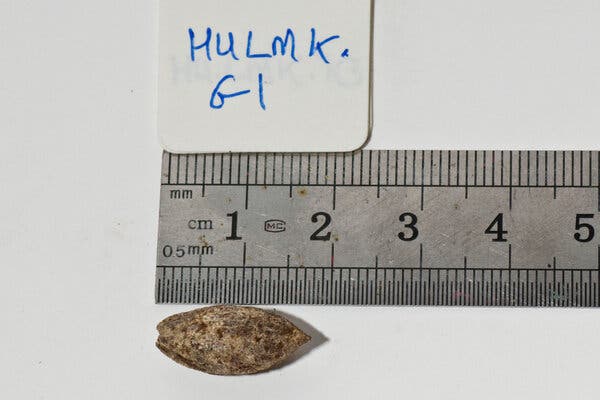Camels laden with spices, gold and precious stones accompanied the Queen of Sheba on her biblical journey to Jerusalem in the 10th century B.C. A thousand years later, Flavius Josephus, the Jewish Roman historian, wrote that the haul had included the balm of Gilead, a fragrant, highly prized resin also known as Judean balsam, which served as the basis for perfumes, incense and medicinal remedies.
The balsam was said to have been harvested from a plant cultivated in oases around the Dead Sea basin; the plant vanished from the region by the ninth century A.D., setting off a longstanding debate about its scientific identity. “In ancient accounts, descriptions vary,” said Sarah Sallon, director of natural medicine research at the Hadassah Hospital in Jerusalem. “Before the Common Era, the plant is said to be the size of a tree. But in the first century, the Roman historian Pliny the Elder described it as a shrub that resembled a grapevine.”
In 2010, Dr. Sallon obtained a mysterious seed from the archaeological archives of Hebrew University, hoping that it could germinate. The seed had been discovered in a cave during a 1980s excavation at Wadi el-Makkuk, a winter water channel in the northern Judean desert, and was languishing in storage. After determining that the seed was still viable, Dr. Sallon’s research team planted, sprouted and carefully tended it. When the husk was carbon-dated to between A.D. 993 and A.D. 1202, a thought occurred to Dr. Sallon. “I wondered if what germinated could be the source of the balm of Gilead,” she said. On the hunch that it was, she named the specimen Sheba.
Since then, the 1,000-year-old seedling has grown into a sturdy 12-foot-tall tree with no modern counterpart. Sheba’s painstaking revival — kept secret from the public for 14 years — is detailed in a study that was published in September in the journal Communications Biology. “Why the time lag between the seed’s germination and the publication of the research?” Dr. Sallon said. “The reason is I wanted to make sure that Sheba wasn’t the Judean balsam, which is something that I would only definitively know by smell.”
As it turned out, Sheba not only lacks a distinctive scent but is more likely to be the wellspring of an entirely different balm mentioned in scripture.
